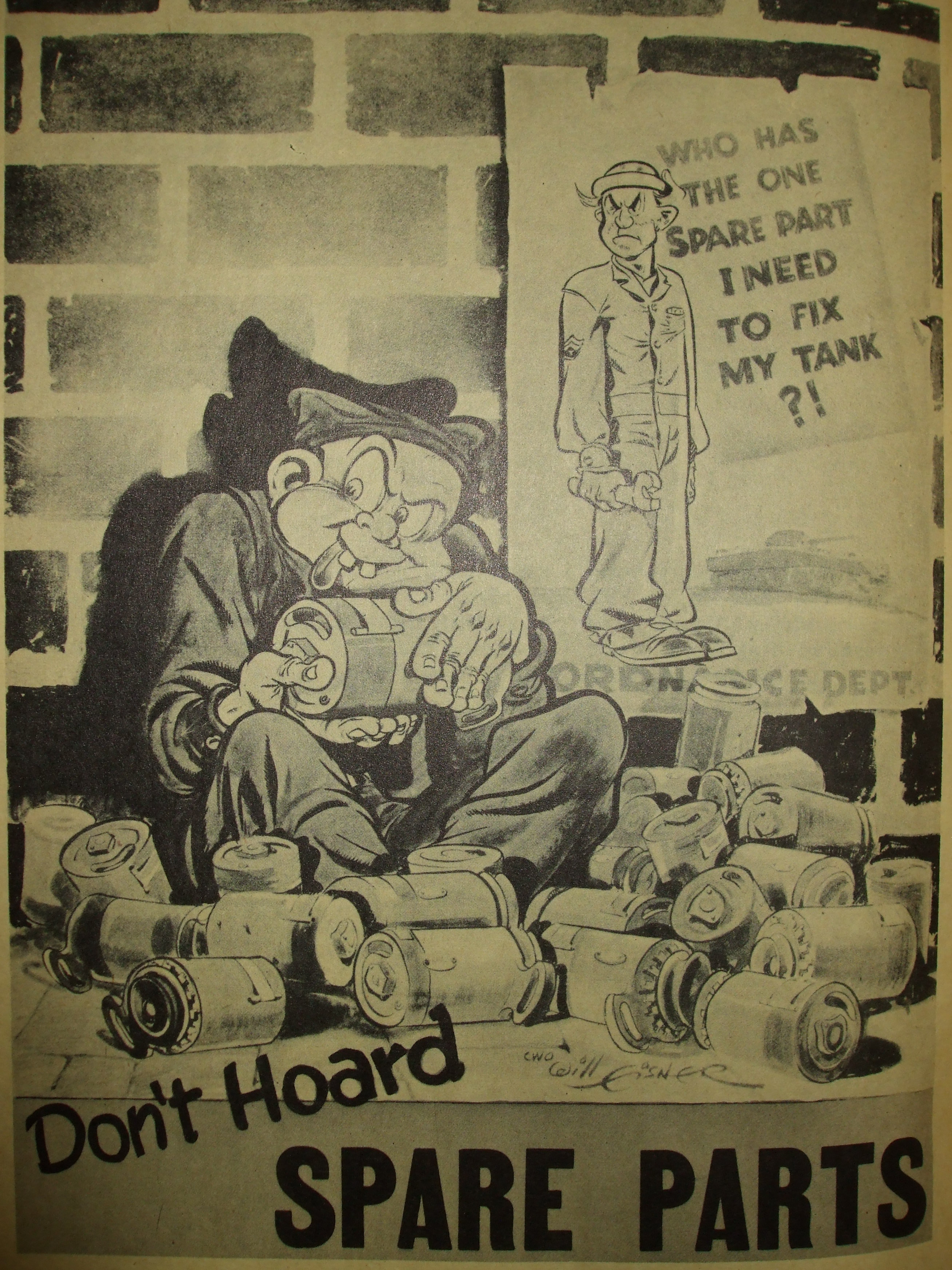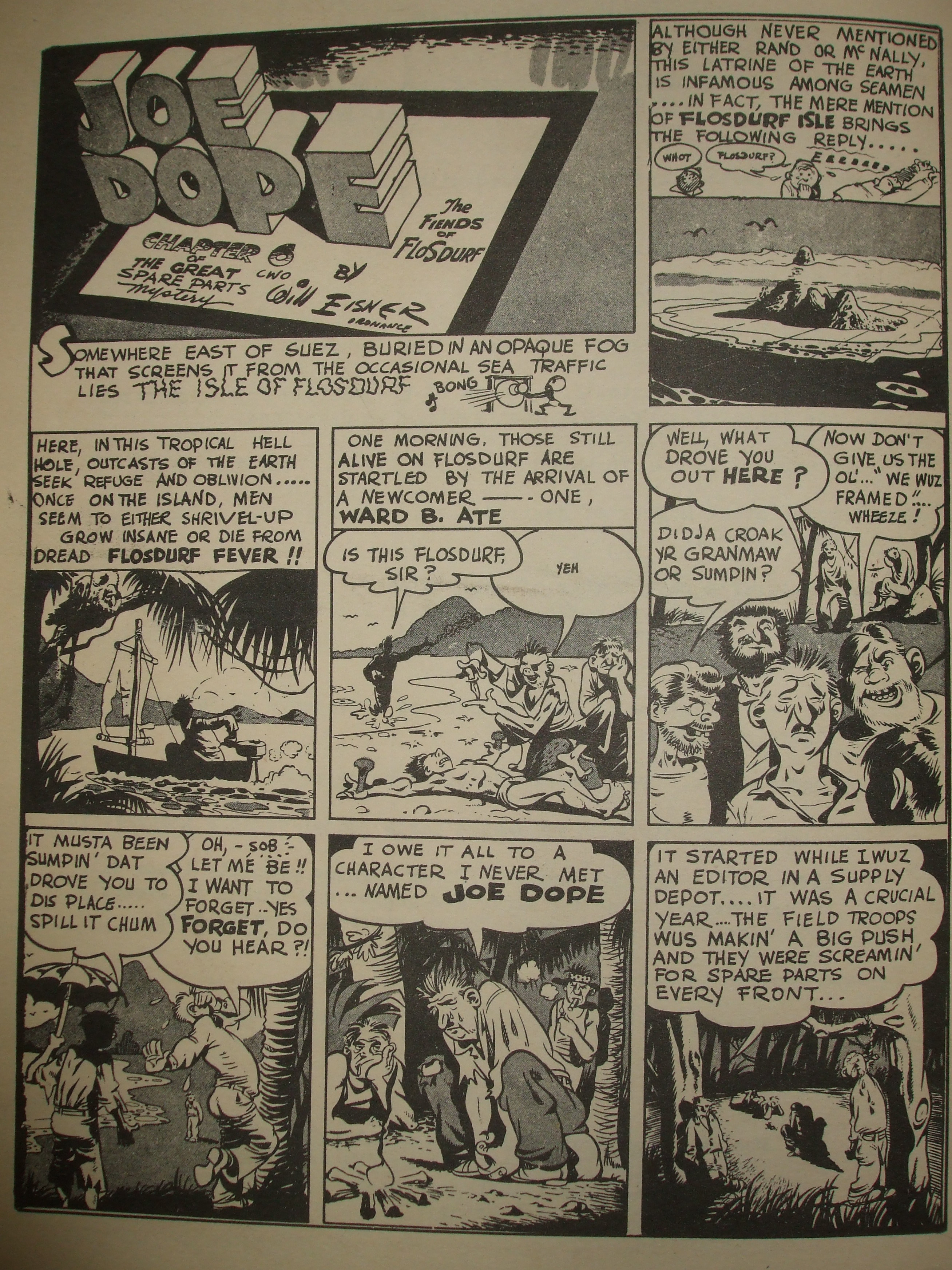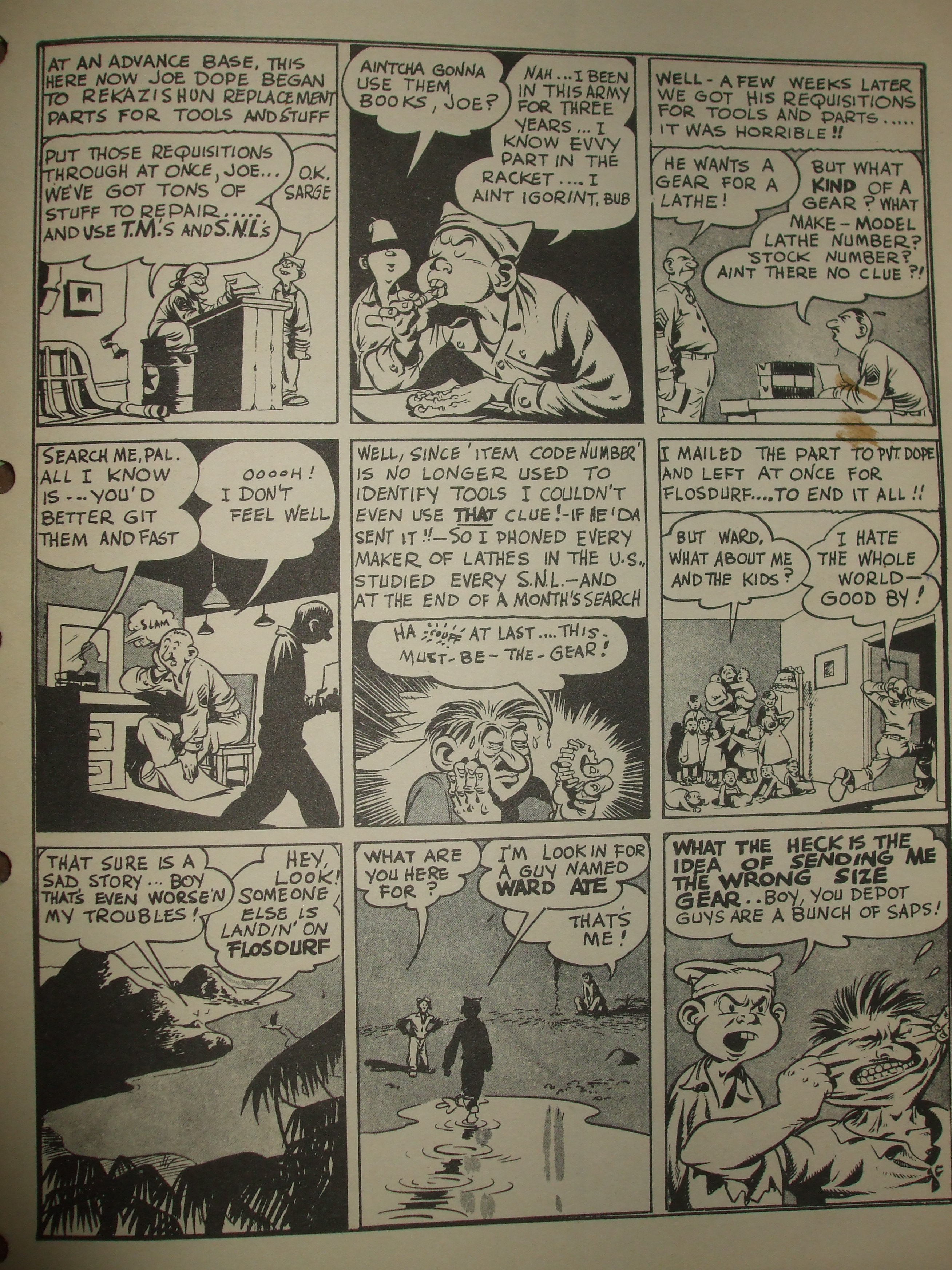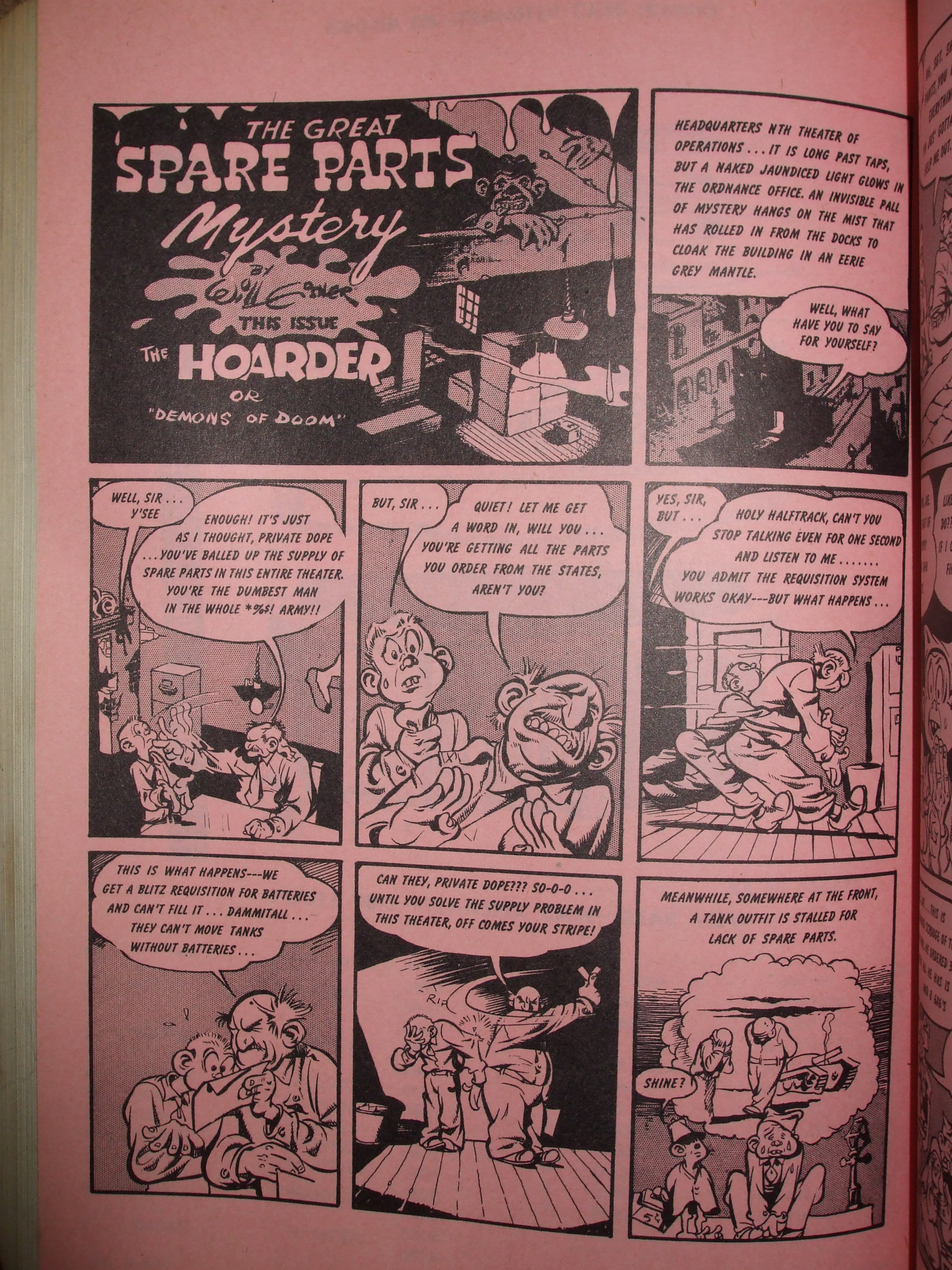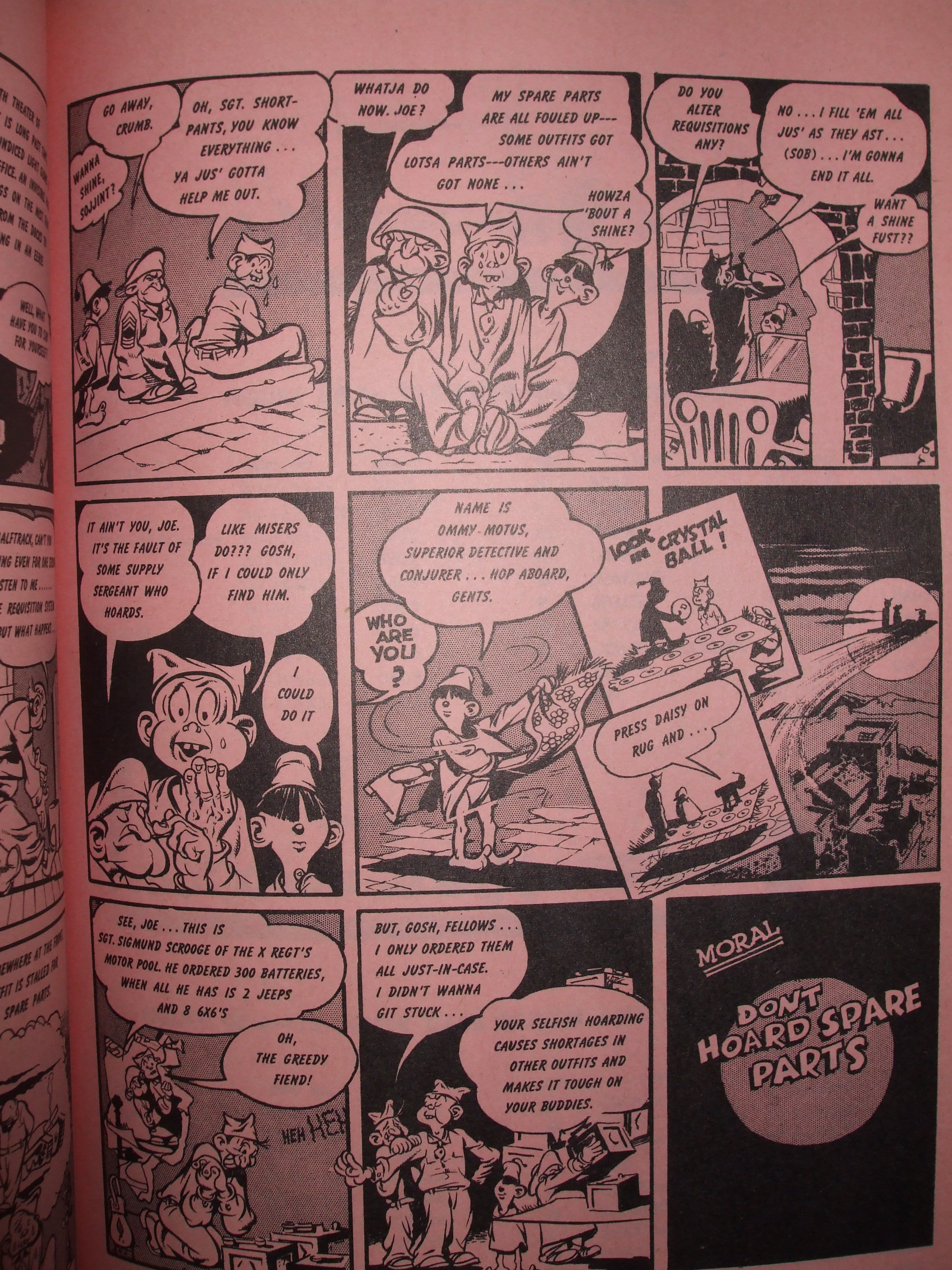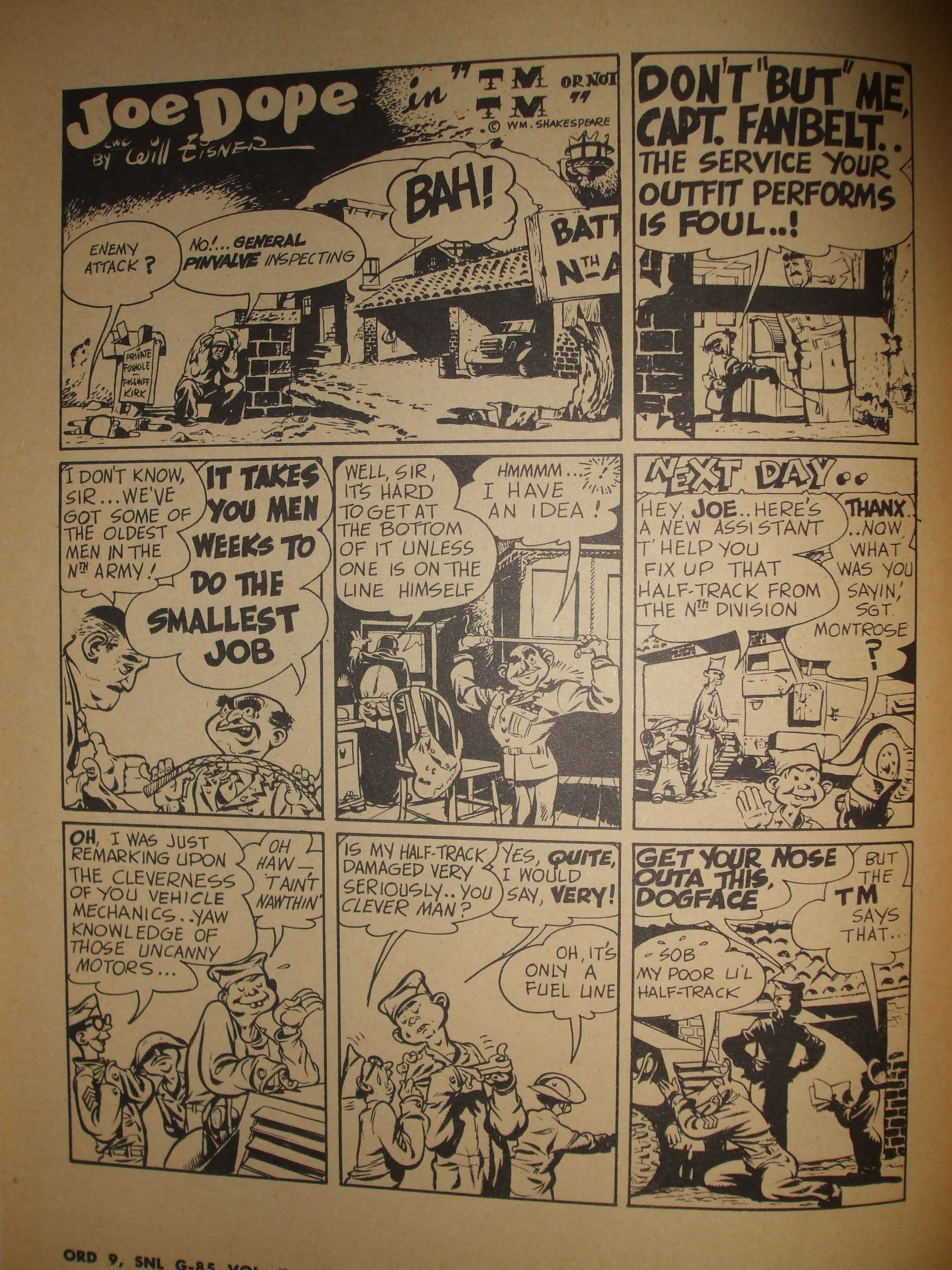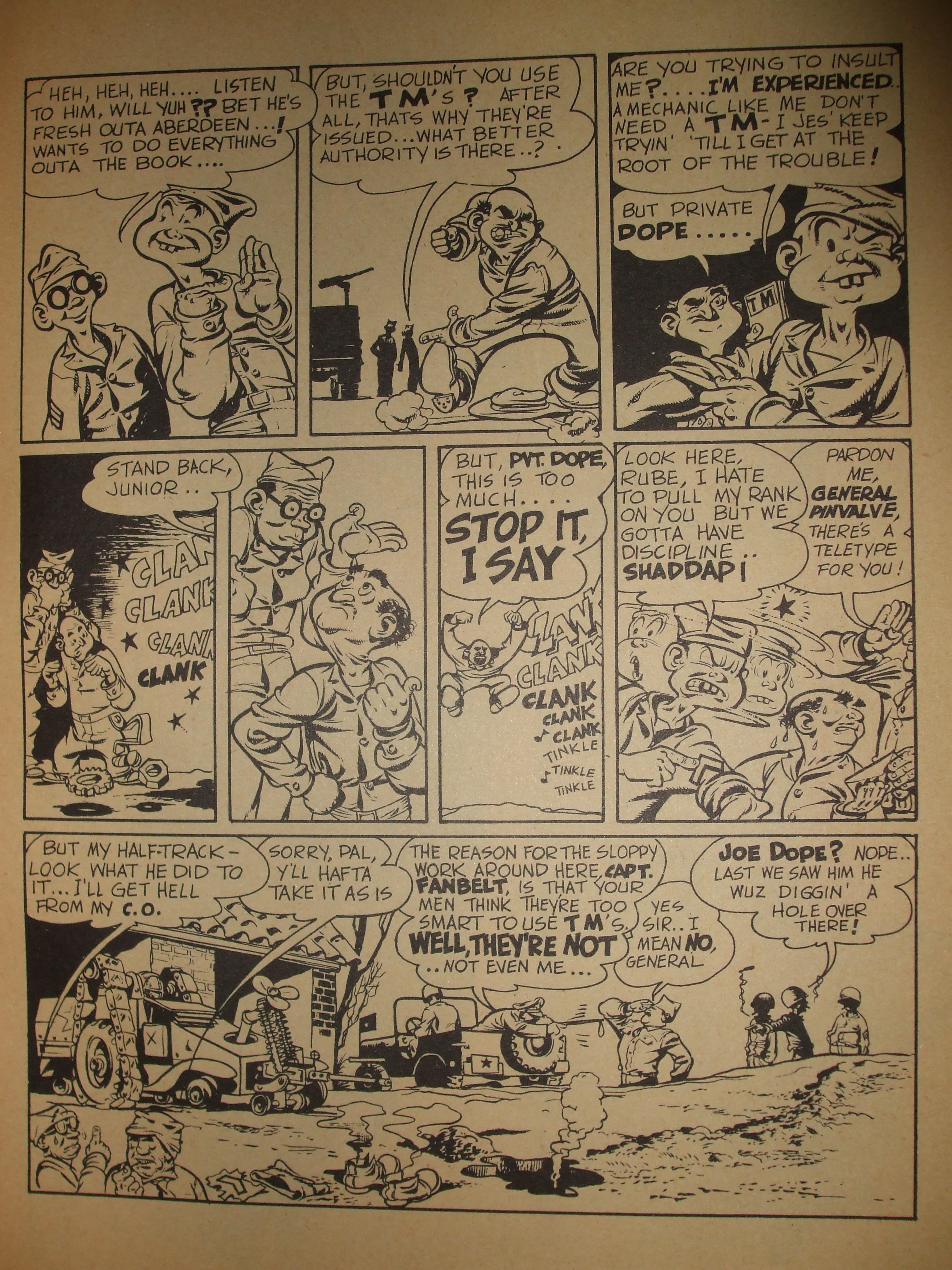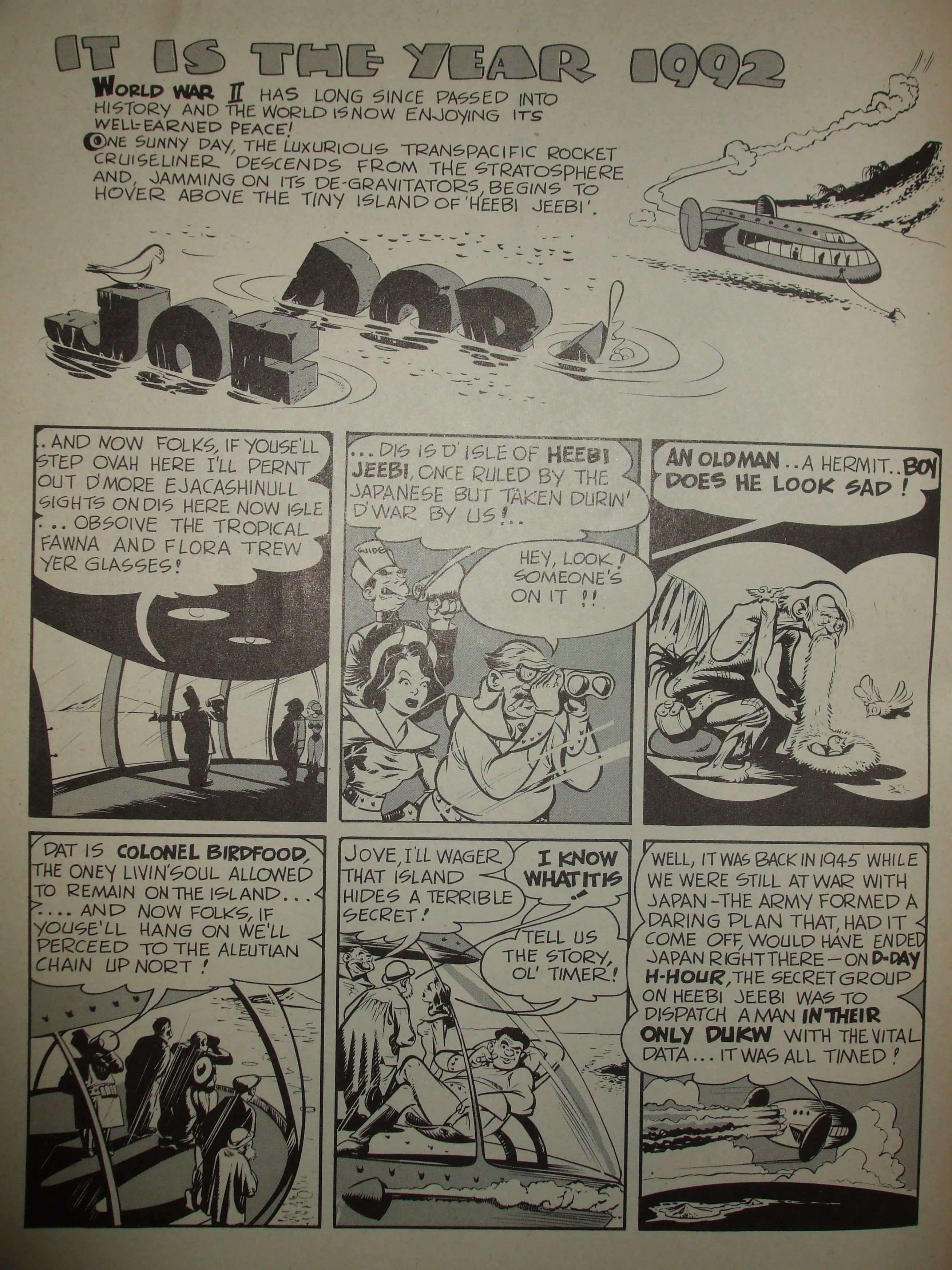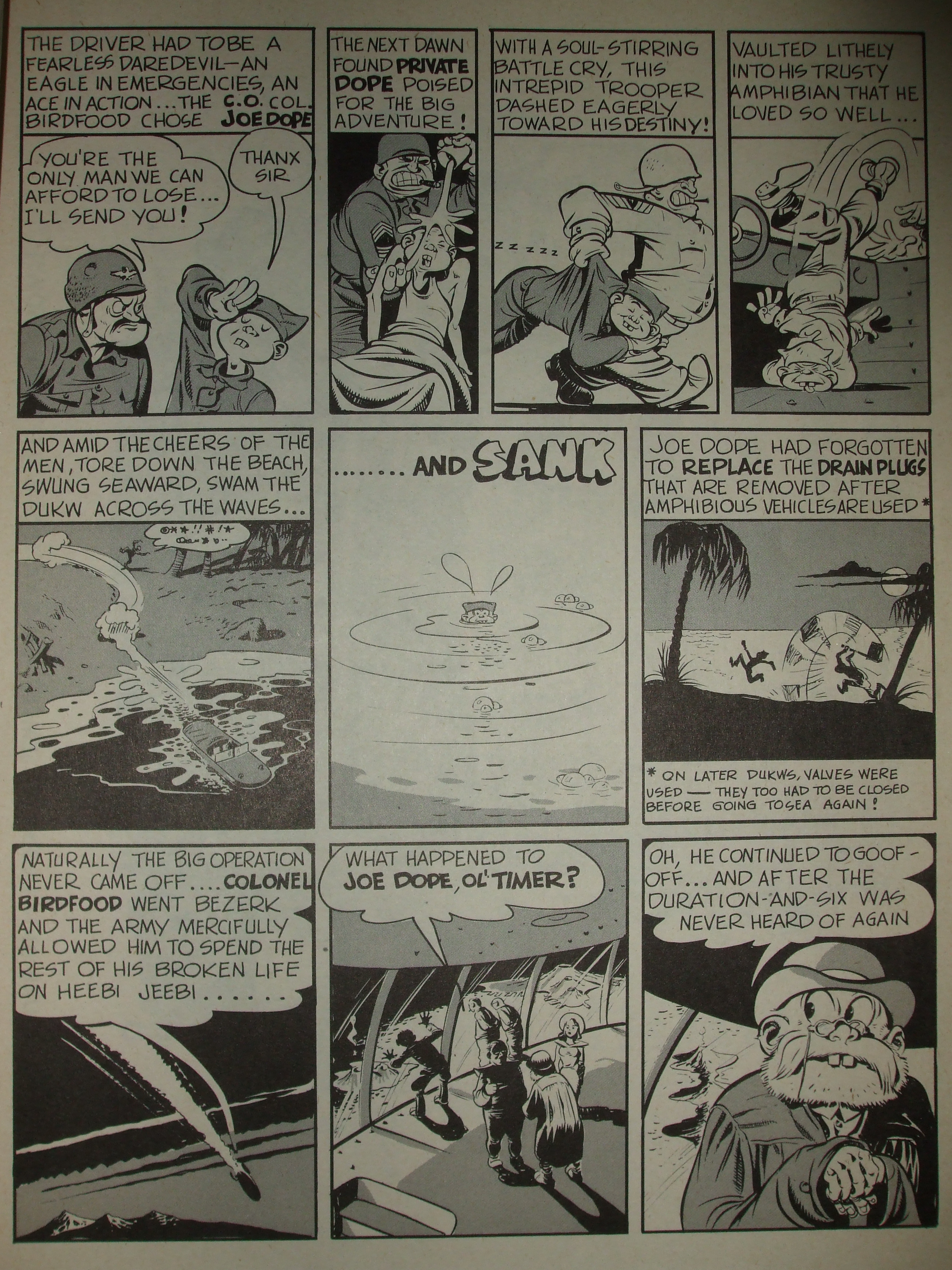Will Eisner
William Erwin "Will" Eisner (March 6, 1917 – January 3, 2005) was an American cartoonist, writer, and entrepreneur. He was one of the earliest cartoonists to work in the American comic book industry, and his series The Spirit (1940–1952) was noted for its experiments in content and form. In 1978, he popularized the term "graphic novel" with the publication of his book A Contract with God. He was an early contributor to formal comics studies with his book Comics and Sequential Art (1985). The Eisner Award was named in his honor, and is given to recognize achievements each year in the comics medium; he was one of the three inaugural inductees to the Will Eisner Comic Book Hall of Fame.
World War II and Joe Dope[edit]
Eisner was drafted into the U.S. Army in "late '41, early '42"[29] and then "had about another half-year which the government gave me to clean up my affairs before going off" to fight in World War II.[30] He was assigned to the camp newspaper at Aberdeen Proving Ground, where "there was also a big training program there, so I got involved in the use of comics for training. ... I finally became a warrant officer, which involved taking a test – that way you didn't have to go through Officer Candidate School."[29]
En route to Washington, D.C., he stopped at the Holabird Ordnance Depot in Baltimore, Maryland, where a mimeographed publication titled Army Motors was put together. "Together with the people there ... I helped develop its format. I began doing cartoons – and we began fashioning a magazine that had the ability to talk to the G.I.s in their language. So I began to use comics as a teaching tool, and when I got to Washington, they assigned me to the business of teaching – or selling – preventive maintenance."[31]
Eisner then created the educational comic strip and titular character Joe Dope for Army Motors, and spent four years working in The Pentagon editing the ordnance magazine Firepower and doing "all the general illustrations – that is, cartoons" for Army Motors. He continued to work on that and its 1950 successor magazine, PS, The Preventive Maintenance Monthly until 1971.[31] Eisner also illustrated an official Army pamphlet in 1968 and 1969 called "The M16A1 Rifle" specifically for troops in Vietnam. Eisner's style helped to popularize these officially-distributed works in order to better educate soldiers on equipment maintenance.[32][33]
WEBSITE REFERENCE TOOLS
Use these tools to aide you while you are here....

